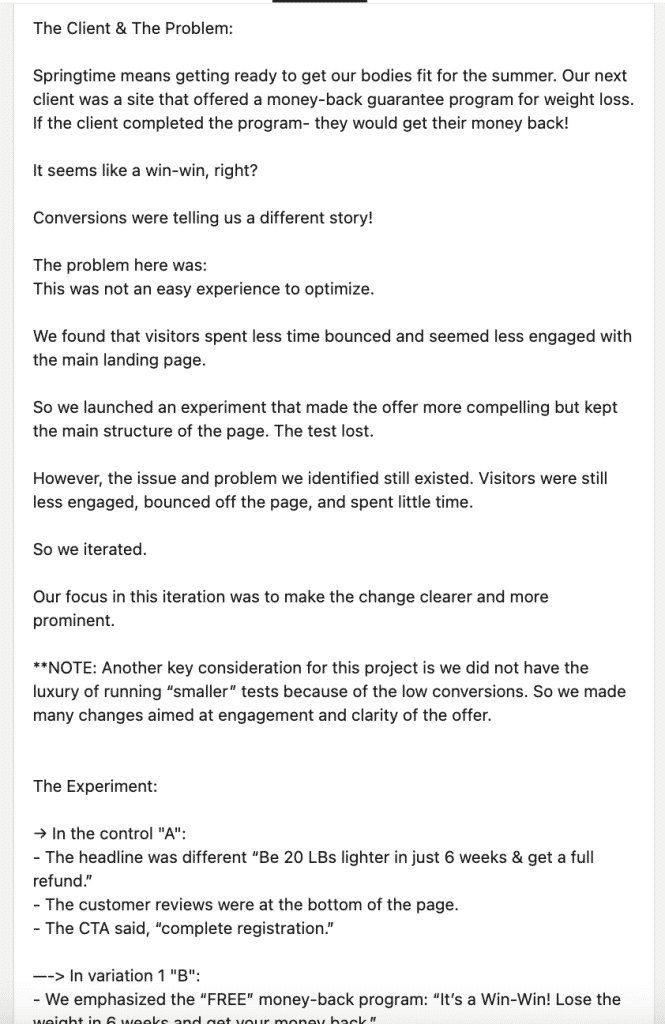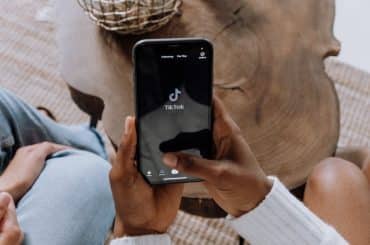When I first started with case studies almost 6 months ago, it was my first time working on such a task. I have been in content marketing for nearly a decade, and in all those years, I have never written any case study.
So, from the onset, I knew that this case studies task would be an interesting challenge.
Whenever I saw case studies, I only saw them on company websites – landing pages, home pages, and blogs.
But these particular ones I was working on were going to be used on social media. So, they had to be short and come with appealing graphics.
Before I tell you about how I created these case studies, let’s talk about the objectives behind this whole case studies task.
Case Studies Goals
For the last couple of quarters, one of my OKRs was to work on increasing the number of LinkedIn followers on FigPii and Invesp accounts.
Accordingly, my key objective under this OKR was to create a social media content calendar and post daily on both accounts.
And that’s where the case studies come in – I post them every Wednesday using the #ABTestWednesdays hashtag.
Our case studies showcase some of our winning AB tests launched on various websites. They highlight the reasons behind launching a particular test, the original design, the variation(s), and the lessons learned during the experiment.
So, going back to the case studies goals:
- To help with FigPii brand awareness, showcasing that what we offer is valuable and effective through our successful AB tests.
- To increase the number of followers of FigPii and Invesp and retain our current followers.
- To drive more engagement. Engaging followers helps with both acquiring and retaining followers.
Case Studies’ Outline

When doing case studies for social media, you need to make it as interactive as possible.
What I mean by interactive content is content that has elements that encourage people to interact with it.
Here are the steps to do case studies on conversion rate optimization:
- Start with an opening statement to grab your followers’ attention. In our case, we start with sentences like “We’re back with another edition of #ABTestWednesdays,” or “You have the right information on your page – you just need to place them differently. Let’s jump right in with another #ABTestWednesdays.”
- Introduce the client you are presenting their case study.
- Talk about the “why.” Describe the problem that led you to conduct this experiment/test and try to solve it.
- Then talk about what you did do in detail during the experiment. Talk about the before and after, what you changed, and why.
- Showcase your results. In our case, we present which variations had an uplift and which didn’t in different metrics based on the page we are talking about.
- Finally, we list the takeaways and lessons that can help whoever is reading when facing the same problem.
Case Studies 6 Months Ago vs. Now
When I first started creating case studies, I did things differently from how I do it now.
- 6 months ago, I wrote lengthy posts, as my boss Ayat called “wordy.”
Based on what I experienced, people don’t like wordy posts; they like to get straight to the point.
- I also started using subheadings in the case studies to make them more precise, more organized, and easier for the reader to understand.
- As for the design, let me be frank with you, if you are not a designer, don’t try to be!
At first, I used Canva, which is a great tool; however, it didn’t look that professional with my expertise in designing.
Also, having your unique template, not a ready-made one, helps with branding. It makes your work stuck more with your followers; they will recognize it anywhere as yours.
- The more metrics you highlight, the more it proves your experiment was successful on many levels. They also help boost your followers’ confidence in your brand. This is something I didn’t do in the beginning; I only highlighted the conversion rate.
Where Do We Share Our Case Studies?
As I previously mentioned, the main purpose of the case studies was to help with FigPii’s LinkedIn.
However, the more the case studies got exposed, the more attention they grasped. That’s when we started to distribute their content even more.
Why?
Content distribution helps increase brand awareness, solidify our brand’s existence, and help build a loyal community of followers, earn backlinks, social media shares, and website traffic.
So, now we are sharing it on FigPii’s account, Invesp’s account, and some of my colleagues’ personal LinkedIn accounts.
We are also using them in some PDFs we are currently working on.
Moreover, currently, they are used in some of Invesp’s weekly newsletters.
Wrapping Things Up
Based on the positive results and what we just presented in this blog, going ahead with case studies next quarter is a no-brainer.
More case studies are coming, and maybe in more than one form.



